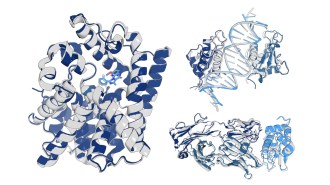- More than 2 years ago
Sport-utility-vehicle owners and conveyor-belt operators would like to know the same thing. When is the rubber they so depend upon going to rip apart?
Now, there’s a new technique for testing the health of rubber in a tire, conveyor belt, seal, gasket, or other structure. The new test could help factories determine when to replace rubber parts in routine preventive maintenance, says Maria Forsyth of Monash University in Victoria, Australia. She described the procedure last month in Honolulu at the 2000 International Chemical Congress of Pacific Basin Societies.
In widely used methods of analyzing rubber’s condition, testers either visually inspect the material or remove a sample and mechanically measure its density, tear resistance, and other properties, says Forsyth. She and her colleagues conceived of a new technique while working with a mining company to determine the health of its conveyor belts.
Forsyth’s group adapted nuclear magnetic resonance (NMR) techniques to analyze rubber without tearing it apart. By exposing the material to a magnetic field, the researchers can measure the mobility of chains of rubber molecules, says Forsyth. “When a rubber is young and healthy, the chains are flexible,” she says. In risky rubber, they’re more brittle.
The system even can distinguish between degradation in different layers of rubber, such as the well-worn surface of a tire and its healthier core, she says. After identifying degrading regions in this way, an inspector could then remove worrisome pieces of rubber and use more-intensive laboratory analyses to further characterize chemical damage, she adds.
Currently, the technique requires operators knowledgeable about NMR. However, the researchers are working with a conveyor-belt company to develop a handheld, turnkey device in the next couple of years that will alert someone with no NMR training when a rubber part approaches its replacement time. “This research has a direct impact on the downtime at the mining sites,” Forsyth and her colleague Anita Hill report.
“The technique could be used for quality control during processing of belts or tires to ensure proper curing,” report Forsyth and Hill. Probably more important, however, will be applications of the NMR device in service and maintenance operations to avoid “catastrophic” failures of rubber parts, the researchers add. Forsyth says she can imagine such devices in routine use in auto-repair shops.






